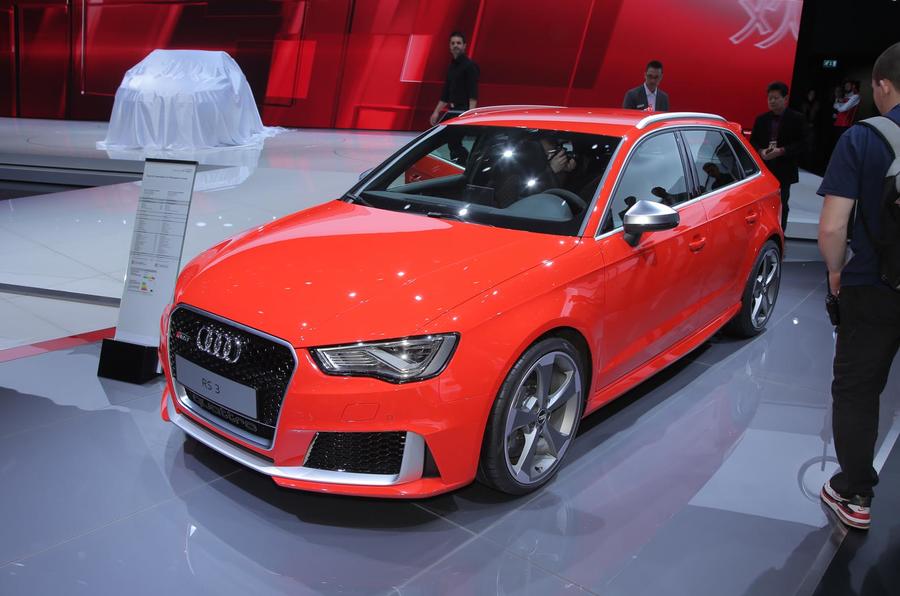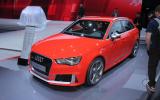The new Audi RS3 Sportback will go on sale in the UK later this month, keeping the £39,950 price tag of its predecessor.
The performance hatch, which has made its global debut at the Geneva motor show, is powered by a reworked 2.5-litre five-cylinder petrol engine producing 362bhp, and offers a supercar-challenging 0-62mph time of 4.3sec. First deliveries of the new model are planned for this summer.
Read our full road test review of the new Audi R3 Sportback.
The four-wheel-drive Ingolstadt mega-hatch has been extensively re-engineered for 2015 in a bid to dethrone the rapid Mercedes-Benz A45 AMG as class champion.
Among the second-generation RS3 Sportback’s more noteworthy developments is a new MQB platform structure that makes extensive use of hot-formed high-strength steel and a body shell incorporating an aluminium bonnet – a combination which sees it shed some 55kg over the model it replaces.
The new car will initially be available in a five-door hatchback body style, although Audi sources hint that a saloon version of the new RS3 is being readied as a riposte to the CLA45 AMG.
The new go-faster Audi is distinguished from its lesser A3 siblings by its aggressive front-end styling. Included is a uniquely shaped grille featuring a matt aluminium-look frame and high-gloss honeycomb insert, as well as a prominent bumper with large air ducts and decorative matt aluminium-look blades. LED headlights, which will be a standard feature on UK cars, complete the look.
Further back, there are widened front fenders, matt aluminium-look door mirror housings and widened sills beneath the doors. The rear receives a uniquely shaped spoiler above the tailgate, a more pronounced bumper with integrated diffuser along with more matt aluminium decorative elements and a pair of large oval tailpipes.
Power for the new RS3 Sportback comes from a reworked version of its predecessor’s turbocharged 2.5-litre five-cylinder petrol engine – the EA855, as it is known internally.
Mounted transversely, the 490mm-long unit gains a number of detail changes to meet EU6 emission regulations while providing a generous 32bhp increase in peak power over the engine used in the first-generation RS3, including the adoption of a new turbocharger which develops up to 1.3bar of boost pressure.
Its 362bhp equates to a specific output of 146bhp per litre – some 3bhp shy of the turbocharged 2.0-litre four-cylinder engine used in the latest S3, which delivers a peak output 296bhp. Torque is also increased by 11lb ft, taking it to 343lb ft delivered between 1625 and 5550rpm – a slightly wider band of revs than previously.
The engine returns a combined 34.8mpg, with CO2 emissions of 189g/km.





























































Join the debate
Add your comment
£40k for a posh Golf, and
If
Ho hum........